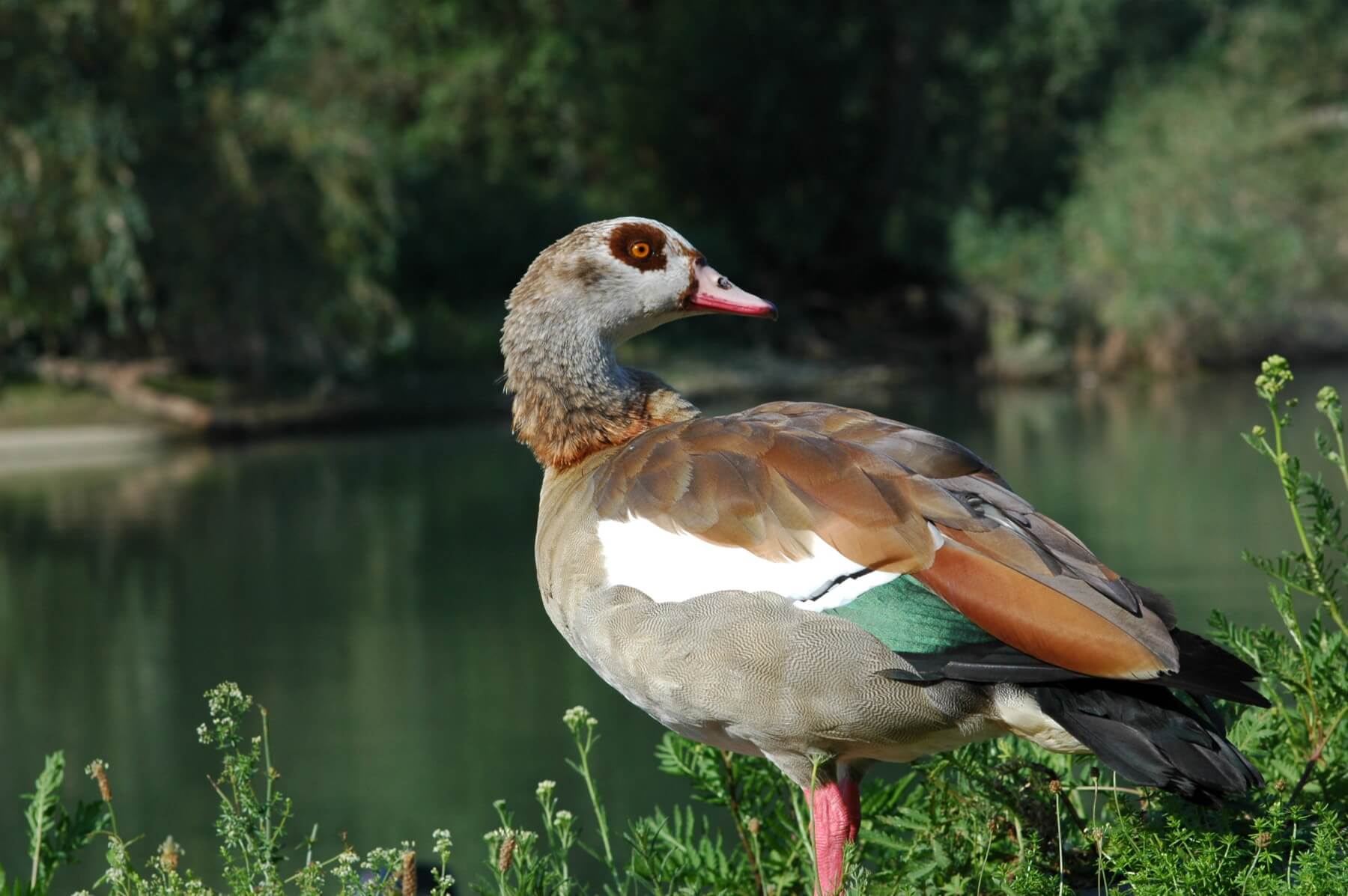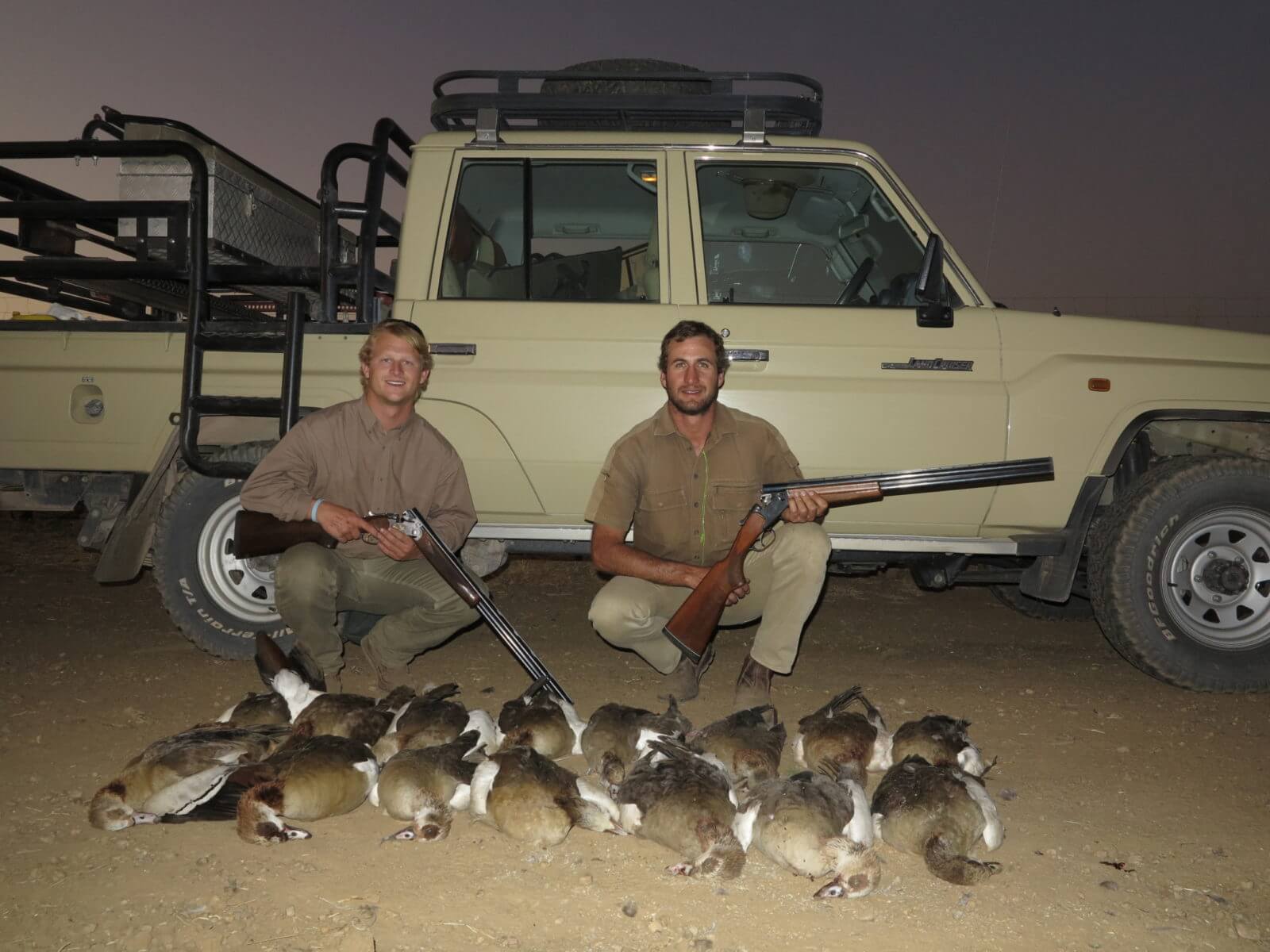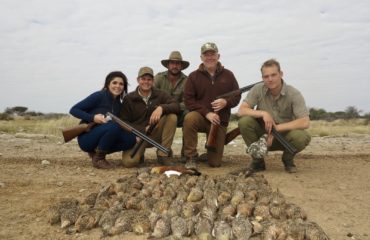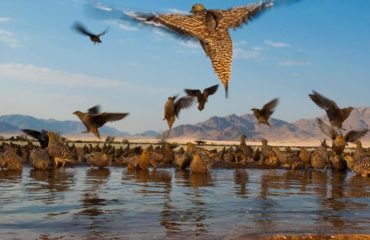Chances are you’ve never heard of Egyptian Geese, but they are to Namibia what the Canadian Goose is to Canada. Highly territorial, aggressive and vocal, these large, goose-like ducks feature long legs and tail with mainly a chestnut and white plumage. In size, they range from 60 to 75 cm, and can weight up to 2.35 kg. Most frequently found along any water bodies, they tend to follow the movement of hippos to feed on the disturbed plants they kick up.

Related to the shelduck, they are a pale brown and grey goose that has distinctive dark brown eye-patches and contrasting white wing patches in flight. They have a unique history, first created as an ornamental wildfowl species by the Ancient Egyptians, they were considered sacred and appeared in much of their artwork.
Since ancient times they have no escaped into the wild, now successfully breeding in a feral state. They are excellent swimmers, but they don’t typically forage in the water, because they don’t filter submerged food through their beaks, like other waterfowl. Instead, they graze on dry land around a pond, feeding on seeds, grasses, leaves and other vegetation and on an occasional insect or small animal.
Pictured here with Dillon, we landed 15 beauties!






